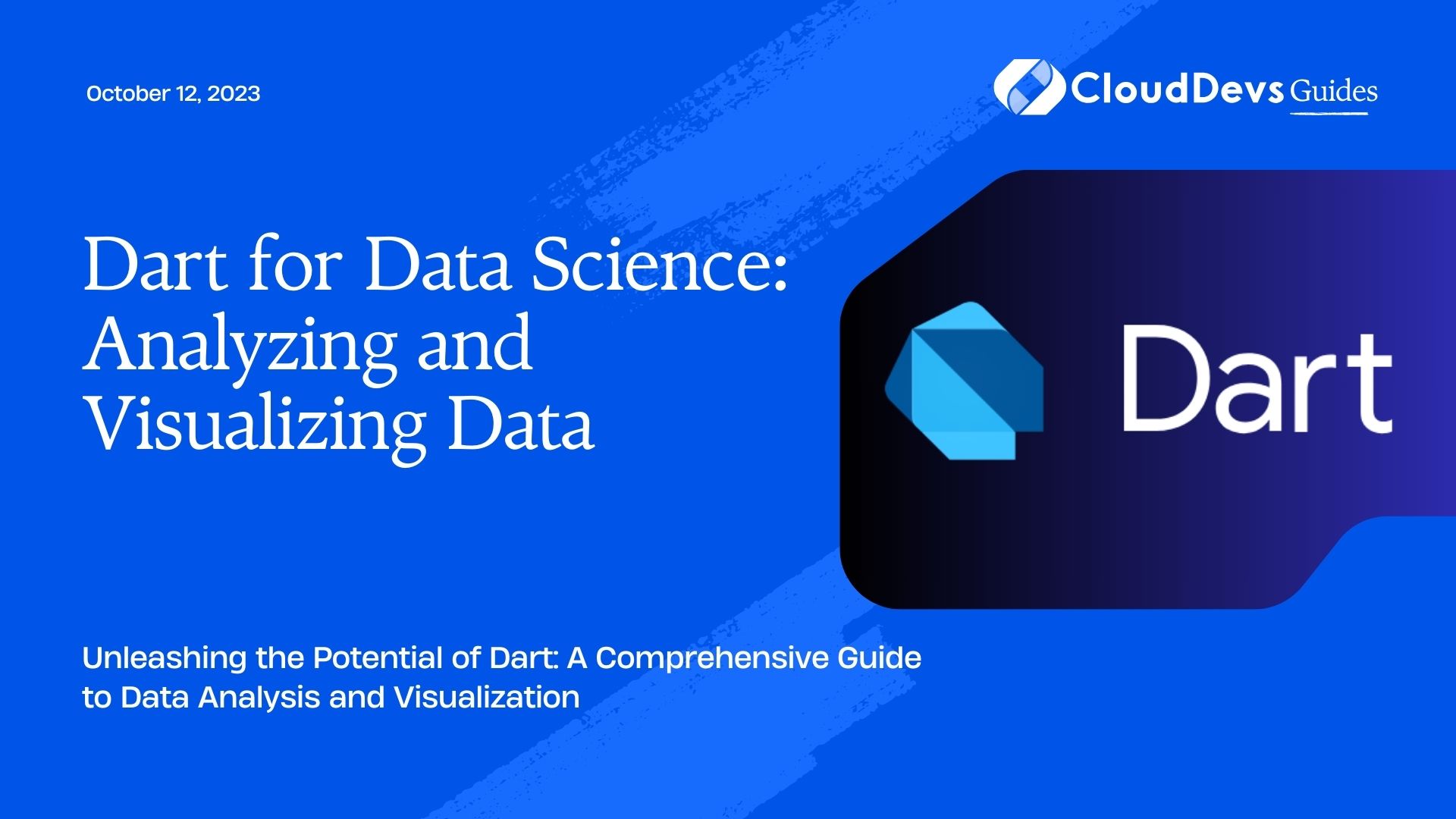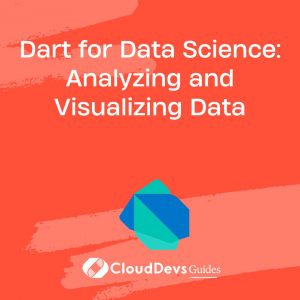How to use Dart for Data Science
Data science is a dynamic field that empowers us to extract meaningful insights from large and complex datasets. While Python has traditionally been the go-to language for data science, there are emerging alternatives that offer unique advantages. One such language is Dart, popularly known for its use in web and mobile app development. However, Dart is more versatile than you might think, and it has the potential to be an excellent choice for data science tasks as well.
In this blog, we will explore how Dart can be utilized for data analysis and visualization. We will delve into essential libraries, techniques, and code examples that demonstrate the capabilities of Dart in the realm of data science.
1. Why Choose Dart for Data Science?
Before we dive into the technical aspects, let’s understand why Dart is a compelling option for data science:
- Performance: Dart is a compiled language, which means it can offer faster execution times for computationally intensive data tasks compared to interpreted languages like Python.
- Strong Typing: Dart’s strong typing system ensures more reliable and robust code, reducing the likelihood of runtime errors and enhancing overall code quality.
- Flutter Integration: If you are already familiar with Dart for Flutter app development, using Dart for data science allows you to leverage your existing knowledge and ecosystem.
- Versatility: Dart’s versatility allows you to use it for both data science and app development, facilitating seamless integration between different parts of your projects.
2. Setting Up the Environment
To begin our data science journey with Dart, you need to set up the environment. First, make sure you have Dart SDK installed on your system. You can download the Dart SDK from the official Dart website (dart.dev) and follow the installation instructions provided.
Once the installation is complete, you can check if Dart is successfully installed by running the following command in your terminal or command prompt:
dart dart --version
If you see the Dart version displayed, you are ready to proceed.
3. Data Analysis with Dart
Before diving into data visualization, let’s explore how to perform data analysis using Dart. Dart provides several useful libraries that can aid us in reading, manipulating, and analyzing data. One such library is csv that enables us to work with CSV (Comma Separated Values) files, which are commonly used for storing tabular data.
3.1 Installing the CSV Package
To use the csv package, add the following dependency to your Dart project’s pubspec.yaml file:
yaml dependencies: csv: ^4.0.4
After adding the dependency, run pub get to download and install the package.
3.2 Reading and Analyzing Data
Let’s assume you have a CSV file named “data.csv” containing the following data:
python Name, Age, Gender, Occupation John, 28, Male, Engineer Jane, 24, Female, Data Scientist ...
We can use the csv package to read and analyze this data. Here’s a sample code to read the CSV file and calculate the average age:
dart
import 'dart:async';
import 'dart:convert';
import 'package:csv/csv.dart';
import 'dart:io';
Future<void> main() async {
final input = File('data.csv').openRead();
final fields = await input
.transform(utf8.decoder)
.transform(CsvToListConverter())
.toList();
final ageColumn = fields.map((row) => int.parse(row[1] as String));
final averageAge =
ageColumn.reduce((sum, age) => sum + age) / ageColumn.length;
print('Average Age: $averageAge');
}
In this code, we use the CsvToListConverter() class from the csv package to read the CSV file, and then we extract the age column and calculate the average age.
4. Data Visualization with Dart
Data visualization is a powerful way to present insights and patterns discovered during data analysis. Dart provides the charts package, which allows us to create various charts and plots to visualize data effectively.
4.1 Installing the Charts Package
To use the charts package, add the following dependency to your Dart project’s pubspec.yaml file:
yaml
dependencies:
flutter:
sdk: flutter
charts_flutter: ^0.10.0
After adding the dependency, run pub get to download and install the package.
4.2 Creating a Bar Chart
Let’s say we want to visualize the age distribution from our previous data analysis. We can create a bar chart using the charts_flutter package to display the age distribution.
import 'package:flutter/material.dart';
import 'package:charts_flutter/flutter.dart' as charts;
void main() {
runApp(MyApp());
}
class MyApp extends StatelessWidget {
@override
Widget build(BuildContext context) {
return MaterialApp(
home: Scaffold(
appBar: AppBar(title: Text('Age Distribution')),
body: AgeChart(createSampleData()),
),
);
}
}
class AgeData {
final String ageGroup;
final int count;
AgeData(this.ageGroup, this.count);
}
class AgeChart extends StatelessWidget {
final List<charts.Series> seriesList;
final bool animate;
AgeChart(this.seriesList, {this.animate});
@override
Widget build(BuildContext context) {
return charts.BarChart(
seriesList,
animate: animate,
behaviors: [charts.ChartTitle('Age Group', behaviorPosition: charts.BehaviorPosition.bottom)],
);
}
}
List<charts.Series<AgeData, String>> createSampleData() {
final data = [
AgeData('18-25', 10),
AgeData('26-35', 20),
AgeData('36-45', 15),
AgeData('46-55', 8),
AgeData('56+', 5),
];
return [
charts.Series<AgeData, String>(
id: 'Age',
colorFn: (_, __) => charts.MaterialPalette.blue.shadeDefault,
domainFn: (AgeData age, _) => age.ageGroup,
measureFn: (AgeData age, _) => age.count,
data: data,
),
];
}
In this code, we create a bar chart to visualize the age distribution based on sample data. The AgeData class represents the data model, and the AgeChart class creates the bar chart using the charts_flutter package.
Conclusion
Dart may not be the most popular language for data science, but it certainly has its advantages and can be a viable choice for certain projects. In this blog, we explored how Dart can be used for data analysis and visualization, showcasing its capabilities in the field of data science. From reading and analyzing data with the csv package to creating insightful visualizations with the charts_flutter package, Dart offers a promising set of tools for data-driven tasks.
Remember that the success of a language in data science largely depends on the specific requirements and constraints of your project. Dart’s performance, strong typing, and Flutter integration can make it a compelling option for specific use cases. So, the next time you embark on a data science project, consider exploring the possibilities that Dart has to offer. Happy coding and analyzing!
Table of Contents








